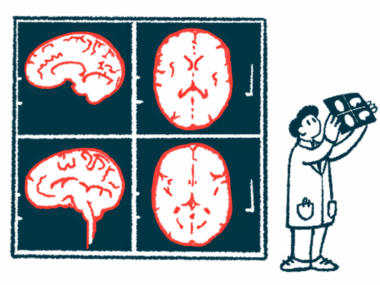Unusual Symptoms of SPMS
Written by |

Secondary progressive multiple sclerosis (SPMS) is a stage of multiple sclerosis (MS) that follows relapse-remitting multiple sclerosis (RRMS). Not all RRMS patients will progress to SPMS, but those who do usually do so around 15 years into their disease. Neurological examinations are necessary to confirm a transition to SPMS.
While symptoms such as fatigue, muscle spasms, bowel problems, pain, walking difficulties, and dysphagia (difficulties swallowing) are common in SPMS, patients may also experience some lesser known symptoms. Many of these symptoms, discussed below, are paroxysmal, meaning they are felt suddenly and disappear quickly, lasting for a few seconds or minutes at the most.
A burning sensation in the face
Some SPMS patients experience what is called trigeminal neuralgia (TN). TN is a condition that affects the trigeminal nerve — the nerve that carries information from the face to the brain — causing a sudden shock-like pain and burning sensation. TN episodes can be triggered by such everyday undertakings as brushing your teeth or putting on makeup, and these episodes can lengthen in MS patients. Usually, women are more affected than men.
Some patients may also experience glosso-pharyngeal neuralgia (GPN), which is similar to TN in terms of severity but is due to damage in the cranial nerve (glosso-pharyngeal nerve). GPN causes pain in the tongue, throat, ear, and tonsils. It can be triggered by laughing, coughing, swallowing, or speaking.
Unprovoked laughing or crying
SPMS patients can have uncontrolled bouts of laughing or crying without any evident trigger. This is called the pseudobulbar affect (PBA) or emotional incontinence. PBA is due to lesions in the part of the brain that controls emotions, called the amygdala. PBA can be distressing and prove challenging at work, school, and in social life; patients having these emotional bursts should discuss them with their healthcare team.
Feeling of electric shocks along the spine
A sudden feeling of electric shock that runs down the spine and the legs is called Lhermitte’s sign, and is due to inappropriate communication between damaged nerves in the neck and the brain (demyelination and hyperexcitability). This damage causes the brain to interpret signals as pain when, in reality, no physical stimulus exists. Lhermitte’s sign is not restricted to MS; it can occur in other neurological conditions as well.
Unusual sensory symptoms
Some SPMS patients may experience a strange sensation of cold and wetness along their limbs or elsewhere on the body. Some also feel numbness that may affect the positioning of the hands and feet, tingling sensations and pinpricks (paresthesia), vibrations, feelings of extra padding on the limbs, or the presence of an object that is not there.
Hugs and itches
Another symptom expressed by some SPMS patients is dysesthesia, a word that means a feeling that is “not normal.” Dysesthesia includes painful, burning sensations that create a feeling of a tight hug, and is commonly called the MS hug. It comes as a tight band or girdle-like sensation usually around the waist or chest (ribs), but can also affect the neck or limbs. It can be brief or long-lasting.
Dysesthesia also includes a symptom called pruritis, or itchiness, that is often severe and uncomfortable. Since the itchiness is the result of nerve damage, it does not respond to topical anti-itching creams and requires professional care.
Blurred vision
In some SPMS patients, vision blurs or worsens when body temperature increases because of overheating or exercise. This is called Uhthoff’s syndrome, and is triggered because the rise in body temperature affects nerve signal transmissions from the eyes to the brain. Uhthoff’s syndrome is usually resolved by cooling your internal temperature with a gel pack, by drinking cold water, or taking a shower.
Optical illusions
SPMS can, in some patients, cause a symptom called the Pulfrich phenomenon. Pulfrich phenomenon is due to inflammation of the optic nerve that runs from the eye to the brain (optic neuritis), creating a false sense of depth. For example, objects that are actually coming toward you in a straight line may appear to take a rounded or elliptical path, much like how planets circle the sun. Proper depth perception can be restored by using spectacles with special filters.
Spasms in the arms and legs
Abnormal electrical discharges in the brain can cause seizure-like spasms in the arms and legs. Patients may experience a sudden tightening of the limbs, twitching, or the kicking out of a leg. Spasms can also affect the muscles of the trunk and face.
Dizziness, vertigo, and migraines
Feelings of dizziness and vertigo are less common, but can affect daily life for SPMS patients when combined with symptoms such as muscle weakness. Headaches and migraines are also known to affect people with SPMS, causing nausea and sensitivity to sound and light.
Last updated: Oct. 30, 2019
***
Multiple Sclerosis News Today is strictly a news and information website about the disease. It does not provide medical advice, diagnosis, or treatment. This content is not intended to be a substitute for professional medical advice, diagnosis, or treatment. Always seek the advice of your physician or other qualified health provider with any questions you may have regarding a medical condition. Never disregard professional medical advice or delay in seeking it because of something you have read on this website.





